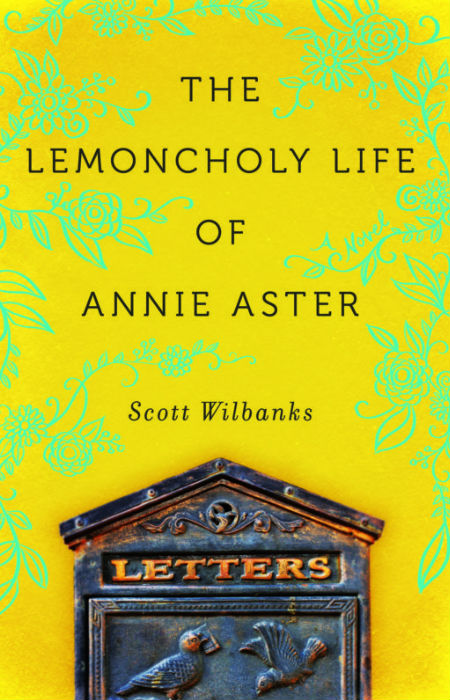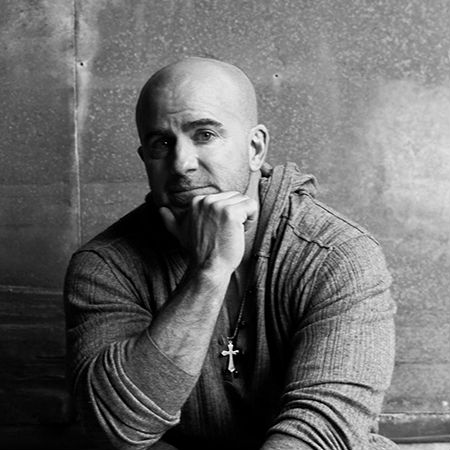
Belonging, truly belonging, to a group of people, family or otherwise, is one of the great defining attributes of being human.
While it’s healthy to define ourselves in our terms as anyone who has ever been part of a dysfunctionally intrusive group will tell you, there is so much to be gained by being deeply, meaningfully and healthily connected to other people.
If you were to ask Annabelle Aster at the start of Scott Wilbank’s resonantly quirky novel The Lemoncholy life of Annie Aster whether she needs that kind of connection, she’d likely tell you that her small, cosy world, which includes one close friend, Christian, post the death of both parents and her beloved godmother Aunt Liza, she would probably shrug it off.
She is lonely, and admits as much, but as an only adopted child, and now orphan, hers is a life defined as much by what’s not there by what is, and it’s something she long ago learned to accommodate.
While she has Christian’s sweetly-innocent friendship, her love of Victorian clothing, her pristine porcelain collection and her volunteering, she is also missing any contact with her birth family, a wider circle of friends and a partner, all things she might like to have but whose absence is an accepted part of her life’s landscape.
“After a quick assessment of her clothes and the impossible state of her hair, Annie wrinkled her nose, letting a flutter of laughter bubble from her throat. ‘No, I’m not having one of my spells, and you’re just in time.’ She shifted in her chaise, adding, ‘I have a riddle that needs answering and I don’t think I can do it on my own.'” (P. 22)
Under New Zealand-based Wilbanks’ deft hand, Annie comes across rather delightfully as an eccentric person who would likely like more but has learned to be content with what she has got.
That is until the walled-off loner – she even keeps her chronic disease from Christian although it becomes clear that he’s paying more far more attention that he lets on – purchases a big red door from an antiquarian dealer in San Francisco where she lives, and a whole other world opens up for her.
A world which, rather remarkably, exists 100 years in the past in Pawnee County, Kansas, a train ride’s journey from Kansas City, a time travel anomaly which would otherwise seem fancifully impossible were it not for the fact that an 1895 wheat field has appeared at the bottom of her sprawling rose garden in 1995 San Francisco.
While it all might seem too fantastical to be true, no one, including an initially incredulous Christian can argue with the fact that two homes, in two separate centuries, are sitting cheek-by-jowl and that Annie and the occupant of the ramshackle farmhouse in the wheat field, Elsbeth Grundy are able to exchange letters via an old brass mailbox on the boundary of the two properties which seems to physically repel their entry into each other’s times.
As premises go it’s a doozy and Wilbanks makes the absolute most of it, offering up a time travelling feast that has all the anomalies and adventuring you’d expect from a story in such an extraordinary setting, with a healthy dose of the kind of emotional resonance that elevates the tale above a simple rollicking adventure (not that there’s anything wrong with that but having people you care about driving the narrative adds immeasurably to an already wonderful book).

The great joy of the unbridled pleasure that is The Lemoncholy life of Annie Aster is the disparate characters that populate the book come to be connected to each other in ways none of them knew they needed but which ultimately come to mean the world to each of them.
Some of these connections are preexisting – to say anymore would be to unveil a slew of deftly-revealed spoilers – but it’s how a diverse group of people including Annie, bff Christian, his boyfriend-in-the-offing Edmund, Elsbeth and even an 1895 con artist girl known simply as Cap’n come to form the kind of family which enriches and deepens life in ways that defy everyone’s expectations.
For all the swashbucklingly intense action, and how could there not be dollops of that in a novel whose story jumps across time with heady alacrity, The Lemoncholy life of Annie Aster really comes alive when each of the characters are growing closer to each other, driven by narrative twists and turns that aren’t just punctuation points in the story but real, meaningful changes in the shape and feel of their lives.
In other words, these are real people experiencing something altogether extraordinary and not only having to come to grips with all kinds of reality-defying (well, as they knew it anyway) elements but how they are impacting their lives.
The closest you can come to the rich, sweet humanity that infuses every page of this gloriously-good tale is the Back to the Future trilogy which, while posited on a different though like-minded conceit, contains a similar mix of nail-biting action and life-changing human connection.
“She stepped back, holding up her hands defensively, as he leaped forward, grabbing her roughly. He shook her until her head bobbled loosely. ‘Annie!’ he cried, shaking her some more. ‘Do you think that’s what bothers me?’ Suddenly, his features crumpled. ‘You’re going someplace I can’t follow.’ He crushed her against his chest, rubbing his face in her hair. ‘I can’t bear it.'” (P. 272)
Wilbanks keeps these two elements in perfect tension throughout, investing The Lemoncholy life of Annie Aster with a gleeful page-turning momentum that never feels less than deeply important because here are people not simply living out a fantastical change of reality and fortune but changing in so many wonderful ways because of it.
It’s a pitch-perfect marriage of story and characters that you can’t help but get invested in; you don’t simply want to see where everything lands, though that is briskly compelling, but you want everyone, in all their very normal quirky glory to get their happy-ever-afters even if at times it looks like that kind of heartwarming end to things is not necessarily a foregone conclusion.
What The Lemoncholy life of Annie Aster affirms more than anything, other than how big red doors with magical symbols on them can massively and fundamental change your life – we’re all dashing off to antique stores this weekend, right? – is a reassurance that though it may be scary, opening yourself up to other people and opportunities can make your life better in the most giddily good of ways.
The novel then is not just about the obvious bravery that comes with taking on a fantastical, near otherworldly turn of events and see where they take you, but being prepared to jump off the emotional cliff that results when the usual boundaries of your life take on all kinds of new forms and you, and everyone else around you, have to make some decisions which on the face of it may look scary beyond measure but which make your life exactly what you never knew it needed to be.